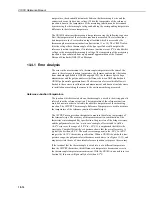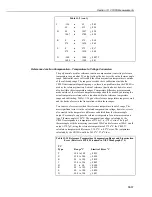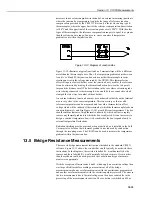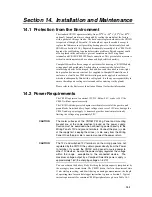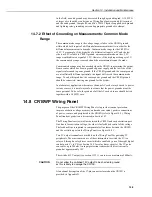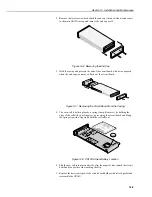
Section 13. CR10X Measurements
13-21
Figure 13-16 Excitation and Measurement Sequence for 4-Wire Full Bridge
Table 13-12 Comparison of Bridge Measurement Instructions
Instruct. No.
Circuit
Description
4
DC Half Bridge
The delay parameter allows the user-entered
settling time to compensate for capacitance in
long lead lengths. No polarity reversal. One
single-ended measurement.
Measured voltage output.
5
AC Half Bridge
Rapid reversal of excitation polarity
for ion depolarisation. One single-ended
measurement at each excitation polarity.
Ratiometric output.
6
4-Wire
One differential measurement at each
Full Bridge
excitation polarity.
Ratiometric output.
7
3-Wire
Compensates for lead wire resistance,
Half Bridge
assuming resistance is same in both wires.
Two single-ended measurements at each
excitation polarity.
Ratiometric output.
8
Differential
Makes a differential measurement without
Measurement
reversing excitation polarity. Used for fast
with Excitation
measurements on load cells, PRTs, etc.
Resolution and common mode rejection worse
than Instruction 6 if used with delay = 0.
Measured voltage output.
9
6-Wire
Compensates for lead wire resistance. Two
Full Bridge
differential measurements at each excitation
or 4-Wire
polarity. Ratiometric output.
Half Bridge
The output of Instruction 8 is simply the voltage measurement. When it is used to
measure a full bridge (same connections as Instruction 6 in Figure 13-15), the
result is V
1
which equals V
x
(R
3
/(R
3
+R
4
) - R
2
/(R
1
+R
2
)). (In other words, to
make the output the same as Instruction 6, use a factor of 1000/V
x
in the multi-
plier.)
Calculating the actual resistance of a sensor which is one of the legs of a resistive
bridge usually requires the use of one or two Processing Instructions in addition to
the bridge measurement instruction. Instruction 59 takes a value, X, in a specified








